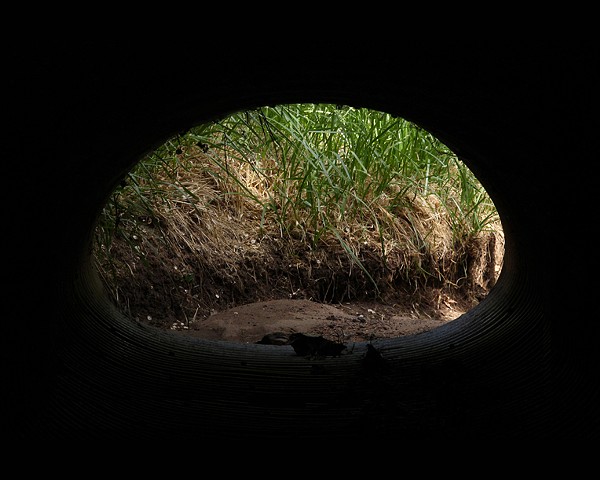Culvert Views
Culvert Views, 2017, archival inkjet prints, 40.64 x 50.8 cm
Developed during a Santa Fe Art Institute "Water Rights" residency, this photograph series was taken along the Acequia Madre in Santa Fe, New Mexico.
Acequias are an ancient water distribution technology of irrigated ditches. They make farming in dry, arid regions possible. Operating solely by gravity, they are both carbon-neutral and sustainable. Introduced by Spanish settlers to New Mexico in the 1600s, the techniques were adapted from similar practices already utilized by Indigenous Pueblo people in the region.
The term "acequia" originates from the Arabic word al-sāqiyah (الساقیة) and dates back to the eighth century, when Berber and Arab settlers brought the technology to southern Spain. Perfected through their experiences in arid North Africa, acequias emerged as a sophisticated water management system. These historic irrigation channels embody a legacy of equitable water distribution rooted in a communal ethos of sustainable coexistence with the natural world. Their management involves collective decision-making and shared responsibility among community members, fostering solidarity and cooperation to address common challenges and ensure fair access to water resources. However, the future of acequias is uncertain, particularly given the escalating water scarcity exacerbated by climate change-induced droughts and extreme weather events.
During my residency, I was drawn to explore the Acequia Madre (Mother Ditch), the central artery that once nourished networks of acequias throughout the city. Traversing its path, I encountered sections obscured beneath roads or inaccessible due to private property. Culverts, necessary to allow the acequia to flow beneath modern infrastructure, became focal points of my exploration. Shooting through the culverts, I captured hidden perspectives, inviting viewers to contemplate our relationship with water and how embracing technologies of the past can guide us toward more sustainable futures.






